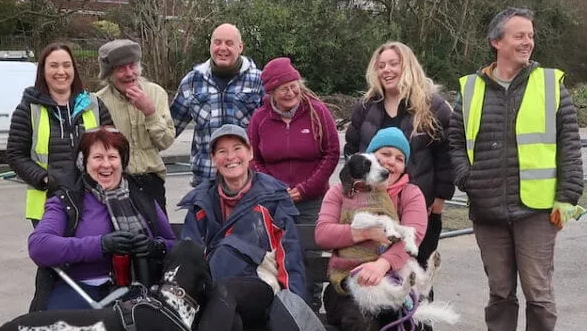How much money could better insulation save us?

People across the UK could collectively save as much as £8 billion on their energy bills through insulating homes and other efficiency measures. With this jaw-dropping figure in mind, insulating our poor UK housing stock and ensuring new construction meets the highest insulation standards should be a flagship priority, for our national and local governments.
In addition to seeing lower energy bills, people feel the tangible benefits of better insulation by being warm indoors in the winter. Housing quality has a significant and material impact on health and wellbeing, as anyone who has lived in cold or damp conditions will tell you. Speaking on the Carbon Copy Podcast episode, Insulate Our Homes, Andrea Howe from Cosy Homes in Lancashire also mentioned how important it is to address poor housing for health reasons:
‘We set up really to make sure that the most deprived properties, the most vulnerable residents, those with long-term health conditions, had an easy way access funding to make sure their homes were warm and that they remained well in their properties. We all know living in a cold home can impact on people’s health and well-being.‘
Alongside helpful links to organisations like Energyworks, the Centre for Sustainable Energy and SHINE London, we’re spotlighting the example of Warmer Homes Scotland – an inspiring Scotland-wide programme tackling fuel poverty, improving energy efficiency and providing jobs and training opportunities at the same time. Warmer Homes Scotland is a brilliant example of local action that’s really big. To date this initiative has supported more than 35,000 households in Scotland, helping people to manage their bills and keep their homes warm and healthy.
An Energy Performance Certificate (EPC) is a standardised rating for UK homes that indicates the energy efficiency of the building in a clear and transparent way. The ratings are graded from A (most efficient) to G (least efficient), and these EPCs really do matter. Increasing the energy efficiency of the UK’s properties to EPC rating C (not even the most efficient!) could prevent around 650,000 new cases of childhood asthma by 2030. So there really is an enormous need for ambitious initiatives like Warmer Homes Scotland to be rolled out elsewhere.
The UK as a whole needs a new scheme and a big investment in training so we have the workforce in place to upgrade our nation’s homes – a home energy efficiency scheme modelled on Scotland’s programme; but importantly, we should not wait for Westminster. Locally, we have opportunities right now to plug some of the gaps in our leaky homes and save on energy bills, by navigating the different schemes currently available and by using local area services.
Learn more about insulating homes
For more information about insulating homes, and steps you can take to improve the energy efficiency of your home, to listen to the Insulate Our Homes podcast episode, and to find links to organisations that can help, visit https://carboncopy.eco/takeaction/insulate-our-homes.
Recommended from Carbon Copy
-

Copy These! 5 Big Local Ideas About Using Decentralised Energy
Communities around the UK are generating their own electricity - through solar, hydro and wind. But how can they ensure…
-
 Affordable Energy, Buildings & Places, Climate Action, Good Food, Greater Fairness, Health & Wellbeing, Less Waste, More Jobs, Strong Communities
Affordable Energy, Buildings & Places, Climate Action, Good Food, Greater Fairness, Health & Wellbeing, Less Waste, More Jobs, Strong CommunitiesCopy These! 5 Big Local Ideas About Creating A Community Hub
Learn how communities are reinvigorating once-forgotten spaces, to bring local environmental, social and economic benefits.
-

How to Choose a Sustainable Christmas Tree: Real vs Fake
As you’re gearing up for the festive season, the question of which Christmas tree to bring home might come up.…
-
 Food and Agriculture, Good Food, Greater Fairness, Health & Wellbeing, Less Waste, Thriving Wildlife
Food and Agriculture, Good Food, Greater Fairness, Health & Wellbeing, Less Waste, Thriving WildlifeCopy These! 5 Big Local Ideas About Creating A Food Partnership
We all need to eat, and a food partnership is a great way to create a stronger, more sustainable, more…